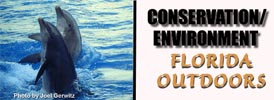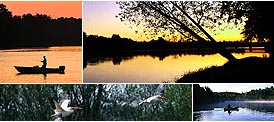
Cypress Swamps | Hardwood Swamps | Freshwater Marshes | Beaches & Dunes | Maritime Forest | Salt Marsh | Mangroves


Most of the marshes in Florida occur south of Orlando. Before the boom years of the early and mid 1900s, Freshwater marsh habitats flourished along the St. Johns and Kissimmee Rivers and in scattered spots in central Florida. Many of these sites are now gone or severely altered, victims of development.
Like the state's freshwater swamps, water levels fluctuate in the marshes. From June through September daily rains the marshes have standing water. From October to December of January, when the rainfall amounts are very low, the standing water gradually flows towards the coast or seeps into the porous ground. By February and continuing through the end of May, many marshes are completely dry. This makes them susceptible to fires.
Sawgrass is the most common marsh plant in Florida. It is the dominant plant of the Everglades. Other common plants include water lily and bladderwort in the deeper water marshes and cattail, spikerush, maidencane, arrowhead, bulrush, and cordgrass in the seasonally dry marshes.
Throughout the southern part of the state small flatwoods marshes exist in the slight depressions commonly found in pine flatwoods. Ranging in size from less than one to occasionally more than ten acres, these habitats are seldom more than a foot deep during the peak time of the rainy season.
The largest freshwater marsh is the famous Everglades in the southeastern part of the state. Coined the River of Grass by the matriarch of the Everglades, Marjory Stoneman Douglas, the habitat is now considered on of the most imperiled in the country. Decades of attempts to drain the swamp and make it of some use to man has left the system in a dysfunctional state.
No where is this more evident than in the bird population. Prior to the extensive channelization and installation of flood control structure, the Everglades were home to million of wading birds. Now the number is estimated to be less than 200,000.












